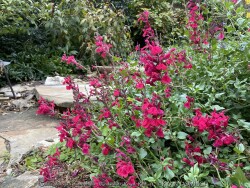

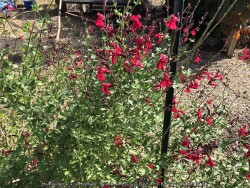
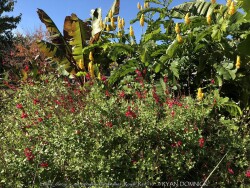
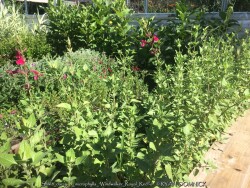
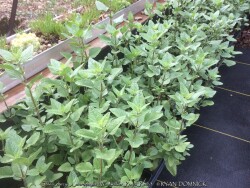
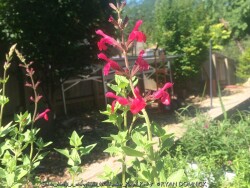

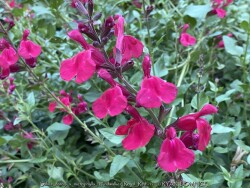
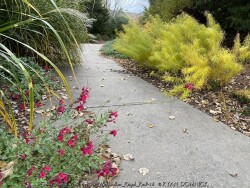
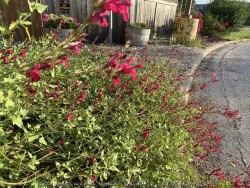

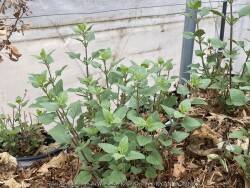
Plant Min Zone: 6a
Plant Max Zone: 9b
Sunlight: All Day Full Sun, Full Sun, Part Sun
Water / Rainfall: Low, Average
Soil Quality: Poor, Average
Bloom Season: Spring, Early Summer, Summer, Late Summer, Fall
Flower Color: Red, Magenta
Berry / Fruit Color: None
Spring Foliage Color: Green
Summer Foliage Color: Green
Fall Foliage Color: Green
Evergreen Foliage: No
Winter Interest: No
Scented Flowers: Yes
Drought Tolerance: High
Wet-Feet Tolerance: Low
Humidity Tolerance: Medium, High
Wind Tolerance: Medium, High
Poor Soil Tolerance: Rocky Soils, Sandy Soils, Shallow Soils, Alkaline Soils (high PH)
Height: 2' - 3'
Width: 2' - 3'
Growth Rate: Medium, Fast
Service Life: Medium: 3-5 years
Maintenance Need: Low
Spreading Potential: Low
Yearly Trimming Tips: Trim Perennial to Ground Around First Fall Freeze: No Winter Interest.
Plant Grouping Size: Specimen Planting of 1-3, Small Grouping of 3-5
Best Side of House: South Exposure, West Exposure, East Exposure
Extreme Planting Locations: Survives Under Roof Overhang, Survives Severe Drought, Tolerates Extreme Heat, Resistant to Rabbits
Ornamental Features: Multiple Seasons of Interest, Long Blooming Season, Long Lasting Fall Color, Emerges Early in Spring
Special Landscape Uses: None
Possible Pest Problems: Root Rot Disease
Plant Limitations: May get Occasional Winter-kill, May Needs Staking, Needs Excellent Drainage
Shippable in 2026: YES
***Description for this perennial available with future update!*** Salvia darcyi x microphylla 'Windwalker Royal Red' is also known as Windwalker Royal Red Autumn Sage >>>>>>>>>>>>Red sage is a wonderful heavily flowering perennial found in Texas and higher election Mexico. Foliage is evergreen to about 0°, Beyond that, it becomes a deciduous perennial hardy to about -15 before complete death would occur. During years in which the foliage remains evergreen, and blooms on old word covering the plants during the month of April. If dieback occurs, blooms will still be dramatic but will be delayed until May on new growth. If Diback does not occur naturally, it is recommended to cut back anyways every 2 to 3 years to maintain bushiness. During the summer, foliage maintains very well with heat and drought with sporadic blooming. Another flush of heavy flowering occurs in fall and continues until hard freezes sometimes into November in our Lawrence Kansas zone6 climate. In the landscape, Red Sage is best on a hot south or west side of a house, on a south side of a berm, or any sunny garden area with some North wind protection. The flower power is so great that it would even be worth using red sage as a short-lived perennial or annual though. Growth in containers is amazing when used as an annual. As with any zone6 perennials, be sure to mulch 2 to 3 inches deep to guard against temperatures below -10F. Red sage needs well drained soils on the dry side but summer irrigation is OK. There is quite a bit of variability within the salvia Greggy species with lots of different colors and heights ranging from 1 to 4 feet. This is a true butterfly magnet; I have seen hundreds of yellow sulfur butterflies visiting at the same time as shown in one of our pictures.